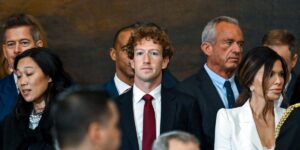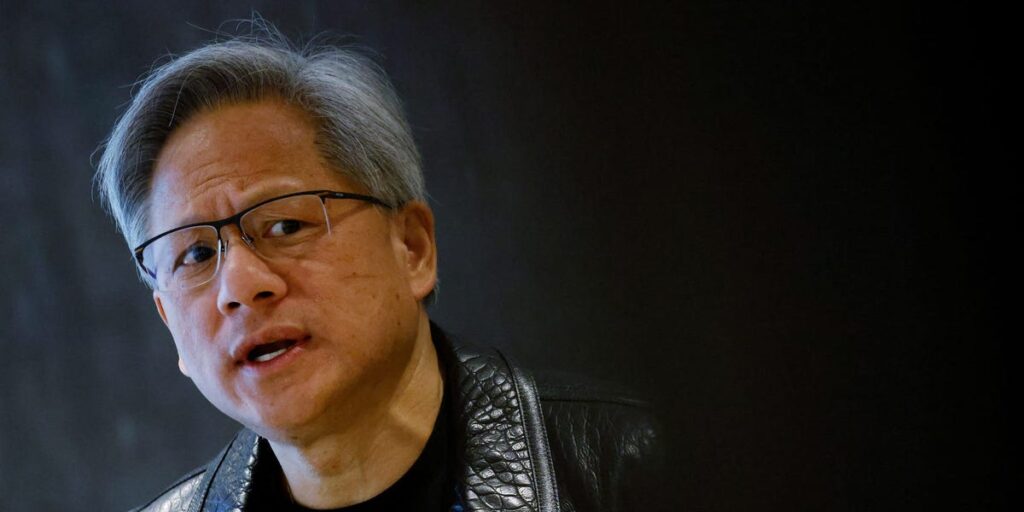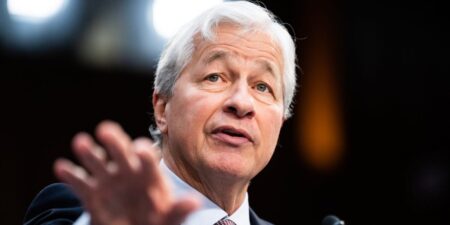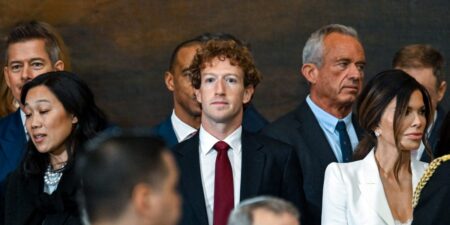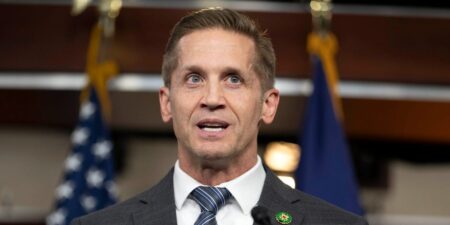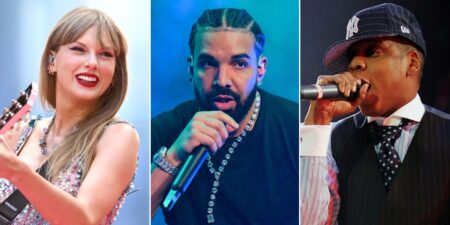- Nvidia finally has a chance to tell investors why their violent reaction to DeepSeek was a mistake.
- The chip giant’s Wednesday earnings are the first since DeepSeek’s AI sparked market panic.
- Key areas to watch are data center revenue, Blackwell’s ramp-up, inference demand, and policy.
When Nvidia reports earnings on Wednesday, the chip giant will have the chance to tell investors why it thinks their intense reaction to the rise of DeepSeek was a mistake — or change the subject entirely.
Heading into 2025, Nvidia’s rule looked unassailable as Elon Musk, Mark Zuckerberg, and others lined up for its chips. That is until Chinese startup DeepSeek released R1, an open-source reasoning model with benchmark results to rival OpenAI’s o1 model.
Critically, R1 was reportedly produced with fewer and less powerful chips than o1.
“DeepSeek’s remarkable feat has shaken the industry’s assumptions about how much capital or GPU chips a company needs to stay ahead of the competition,” Barclays analysts wrote last month.
Although Nvidia has largely recovered from the violent reaction markets had to DeepSeek — the chip firm lost $600 billion in market capitalization in one day to mark the biggest single drop in US market history — CEO Jensen Huang will need to show investors the party is nowhere near over and that the promise of AI isn’t overhyped. Huang previewed his argument at a virtual event broadcast Thursday where he said investors had misinterpreted the signals of DeepSeek.
As Nvidia prepares to address investors officially for the first time since the DeepSeek saga, here’s what to look out for in its earnings.
Data center revenue
Analysts predict Nvidia’s revenue, especially in its all-important data center business, will keep rising — bolstered by already-announced forthcoming data center buildouts.
From Stargate, with $500 billion in expected spending, to Meta forecasting an additional $65 billion in data centers this year, to Amazon forecasting $100 billion more computing power earlier this month, Nvidia’s customers are still lining up.
It will offer Nvidia fresh evidence to present to investors concerned that DeepSeek’s claim to use chips more efficiently — a key driver in lowering costs — would hurt demand.
“Despite DeepSeek’s supposed ‘revolutionary’ optimizations, there is no change thus far to spending intentions at NVDA large customers including Microsoft and Meta,” Bank of America analyst Vivek Arya wrote in a note to investors in early February.
Model improvements, paired with big data center buildouts, are another favorable evidence point for Nvidia.
Grok 3, Musk’s latest model from xAI, is receiving praise for its performance. Musk’s firms also recently collaborated on its second data center with roughly 12,000 Nvidia GPUs, BI exclusively reported.
Musk has been aggressively adding to the fleet of GPU-packed data centers supporting Grok, suggesting a link between progress and infrastructure.
Model builders and hyperscalers still have their eyes on artificial general intelligence, and cheaper, highly functional models like DeepSeek won’t impact that pursuit, Morgan Stanley analysts told investors in a note from last week.
Blackwell ramp-up
Nvidia’s latest and most powerful chip series, Blackwell, has struggled with a slow rollout due to manufacturing and overheating issues. Analysts, however, are expecting the company to report a strong ramp-up.
“Demand for Blackwell is very strong and will outstrip supply for several quarters,” Synovus senior portfolio manager Daniel Morgan said in an investor note last week.
UBS’s Timothy Arcuri wrote that after much consternation, investor fears of a botched rollout are relaxing, and strong sales numbers could put them fully at ease.
UBS analysts also said the fourth quarter was the last in which Blackwell chips won’t make up the majority of Nvidia’s GPU sales. Investors will likely favor that shift because Blackwell brings with it higher profit margins.
Nvidia’s buzzy GTC conference will take place in San Jose, CA, next month, marking the first anniversary of Blackwell’s debut.
Inference and applications
Further growth in inference demand would also be a proof point for Huang’s theory of investor error surrounding the DeepSeek rout. Demand for inference, the process of using and improving models once they’ve been trained, increases when consumers and businesses find value in AI tools.
Investors will likely want to see the share of AI workloads continue to shift to inference, which also requires GPUs to run. On the company’s last call in November, Huang repeatedly said that inference across Nvidia’s platforms was growing.
Growth in the software layers of Nvidia’s tech stack would be a good sign, too. This would suggest maturity in AI products and lend strength to a part of its business that’s potentially even more difficult to compete with than the chips themselves.
“What Nvidia talks about on its long-term moats and its possible deployment on the AI application side probably matters more this time,” Morgan Stanley analysts wrote in a note to investors Friday.
Worldwide wild card
Investors will also be looking for any signals from Nvidia about the company’s approach to China as President Donald Trump threatens to upend business relations with the country.
Just before the end of his term, former President Joe Biden initiated new regulations on the export of high-powered chips like Nvidia’s GPUs, which are in the midst of a 120-day comment period. Many policy analysts expect Trump to allow the rules to take effect as they align with his “America First” agenda, though Trump has yet to directly address them.
As Trump said last month, AI leadership is critical to ensuring “economic and national security.”
Last month, Trump also threatened to impose tariffs on Taiwan, home of Nvidia’s chip manufacturing partner, TSMC. Tariffs could lead to increased costs for Nvidia. Huang met with the president at the White House last month, but neither party provided details of the discussion.
Although Nvidia’s share price has recovered much of its DeepSeek-induced losses, the $3 trillion juggernaut faces various potential headwinds. Huang’s job Wednesday will be to reassure investors that those headwinds will be mild and reaffirm that Nvidia remains fundamental to the AI story.
Read the full article here






